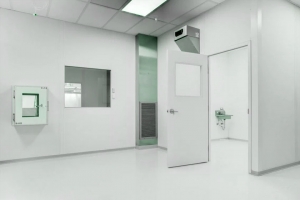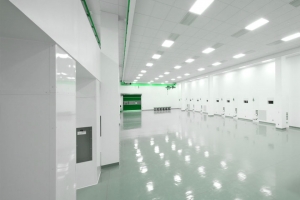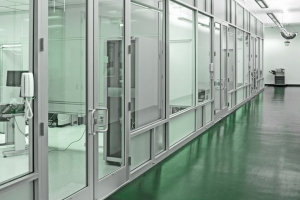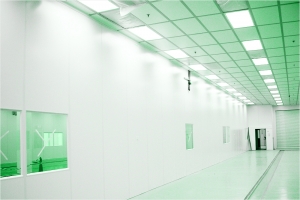Displaying items by tag: cleanroom classification
Cleanroom Requirements & Classifications
Cleanrooms are essential to any manufacturing process where particulate contamination can affect the quality of goods produced. Specific clean room classifications and ISO class code descriptions provide protective guidelines and secure environments through controlled air filtration, which lowers the possibility of product contamination or large particulate interference within critical process manufacturing. Specific cleanroom requirements and ISO 14644-1 cleanroom standards are used to protect consumers from any potential flaw or mishandling of a product.
Classification Impacts For Cleanroom
Clients often come to me specifically requesting an “ISO 7 cleanroom” or an “ISO 8 cleanroom.” What they often fail to realize is that the ISO class does not define the layout of the cleanroom. It only defines the cleanliness level that needs to be met. In fact, the ISO classification actually corresponds to a specification of how clean the cleanroom must be. The ISO 14464-1 standard doesn’t say how to design the cleanroom, it only specifies the maximum quantity of air particles allowed.
Cleanroom Classifications (ISO 5-8)
Cleanrooms are classified according to the cleanliness level of the air inside them. The cleanroom class is the level of cleanliness the room complies with, according to the quantity and size of particles per volume of air. The primary authority in the US and Canada is the ISO classification system ISO 14644-1. This standard includes the cleanroom classes ISO 1, ISO 2, ISO 3, ISO 4, ISO 5, ISO 6, ISO 7, ISO 8 and ISO 9, with ISO 1 being the “cleanest” and ISO 9 the “dirtiest” class (but still cleaner than a regular room). The most common classes are ISO 7 and ISO 8.
The old Federal Standard 209 (class 100,000; 10,000; 1,000; 100; 10; 1) was withdrawn in 2001 and officially replaced by ISO-14644-1 in 1999, but it is still widely used.
In addition, cleanrooms must also comply with industry-specific and regional standards. For example, EU GGMP (A-B-C-D) applies to pharmaceutical products and USP (795, 797 and 800) to compounding pharmacies.
What are Cleanroom classifications
A question commonly asked is "What is a clean room?" Generally speaking a "clean room" is an enclosed room that has equipment which controls the amount of particulate matter in the air by using air pressure and filters. To meet requirements of a "clean room" as defined by Federal Standard 209E and newer ISO Standards, all clean rooms must not exceed a particulate count as specified in the air cleanliness class.
What is a Cleanroom?
Cleanrooms are used in practically every industry where small particles can adversely affect the manufacturing process. They vary in size and complexity, and are used extensively in industries such as semiconductor manufacturing, pharmaceuticals, biotech, medical device and life sciences, as well as critical process manufacturing common in aerospace, optics, military and Department of Energy.
Right wall material for your cleanroom
If you’re working on putting together a design for your cleanroom, you’ve likely noticed that there isn’t a ton of helpful information out there. That’s because up until recently, most buyers just hired a contractor they felt they could trust, and left it at that. But if you’re here, it’s likely because you’re a part of the newer generation of buyer: the savvy, researching buyer who wants all the information before you even head to a cleanroom manufacturing pro.
Well, we’re here to help you out as best we can. We know it can be tough to find the info you’re looking for when it comes to cleanroom components, so we put together this blog to help you figure out your options for cleanroom walls. First things first, what are the most basic components you need for a successful cleanroom wall that upholds your application’s standards?
When it comes to cleanroom walls, you’re really looking for two things: smooth, dust-free surfaces. But finding the type of surface that’s perfect for your operation is a bit easier said than done. To determine what wall material type is best for you, there are a couple of considerations to keep in mind:
Cleanroom Classifications Mean
There is no one-size-fits-all answer for determining the classification level of cleanrooms — they come in different shapes and sizes, they’re used for many different applications, and their cleanliness needs are quite varied. Therefore, it’s important to know what classification level you’re dealing with, and how best to tailor your practices, apparel, products, and equipment to meet these specific needs.
Cleanroom Design Impacts Classification
Clients often come to me specifically requesting an “ISO 7 cleanroom” or an “ISO 8 cleanroom.” What they often fail to realize is that the ISO class does not define the layout of the cleanroom. It only defines the cleanliness level that needs to be met. In fact, the ISO classification actually corresponds to a specification of how clean the cleanroom must be. The ISO 14464-1 standard doesn’t say how to design the cleanroom, it only specifies the maximum quantity of air particles allowed.
Determining Cleanroom Classification
One of the most important factors that you have to determine when constructing a cleanroom is what size of particle you will need to filter out. Is it any size particle? Is it a specific size or range of particles? Most often you find that people look at the cleanroom classification and they go to the lowest level particle count to determine what classification they need.
Cleanroom classifications
Cleanrooms are classified according to the number and size of particles permitted per volume of air. Large numbers like "class 100" or "class 1000" refer to FED-STD-209E, and denote the number of particles of size 0.5 µm or larger permitted per cubic foot of air. The standard also allows interpolation, so it is possible to describe, for example, "class 2000".




















